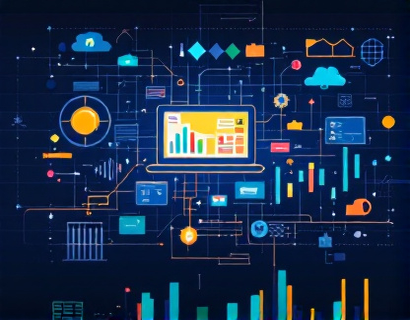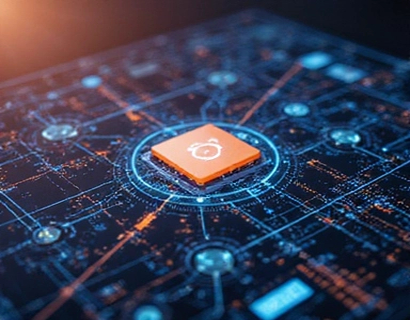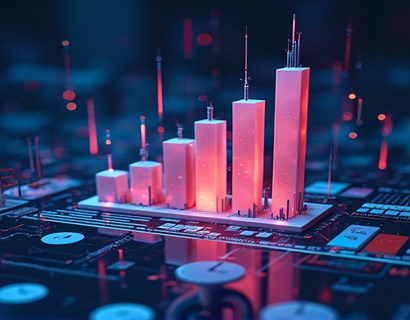Exploring the Frontiers of Nanotechnology with AI-Driven Insights
In the rapidly evolving field of nanotechnology, the integration of artificial intelligence (AI) has opened new avenues for understanding and applying nanobot technology. This article delves into the expert insights provided through an advanced AI chat platform, designed to offer verified information and a secure, child-friendly learning environment for educators, professionals, and students. The focus is on enhancing knowledge about nanobots and their applications, ensuring that the content is both educational and accessible.
Understanding Nanobot Technology
Nanobots, or nanorobots, are microscopic machines engineered to perform specific tasks at the nanoscale, typically between 1 and 100 nanometers. These tiny devices have the potential to revolutionize various industries, including medicine, manufacturing, and environmental science. At their core, nanobots are designed to interact with matter at the molecular level, enabling precise manipulation and interaction with biological and non-biological systems.
The fundamental principles of nanobot technology involve nanoscale engineering, materials science, and robotics. Nanobots can be constructed from a variety of materials, including metals, polymers, and even biological molecules like DNA. Their size and capabilities allow them to perform tasks that are impossible for larger machines, such as targeted drug delivery in medical treatments or precise material assembly in manufacturing processes.
AI-Driven Insights in Nanotechnology
The complexity of nanobot technology necessitates a sophisticated approach to research and education. AI-driven platforms play a crucial role in providing accurate, up-to-date, and comprehensive information. These platforms use machine learning algorithms to analyze vast amounts of data, identify patterns, and generate insights that would be difficult for humans to discern on their own.
One of the key advantages of AI in nanotechnology is its ability to process and interpret complex scientific data. AI can help researchers identify potential applications, predict the behavior of nanobots in different environments, and optimize their design for specific tasks. For educators and enthusiasts, AI-driven chat platforms offer a user-friendly interface to explore these advanced concepts in a structured and understandable manner.
Verified Information and Content Accuracy
Ensuring the accuracy and reliability of information is paramount in scientific fields like nanotechnology. AI-driven platforms employ rigorous content verification processes to maintain the highest standards of accuracy. This involves cross-referencing data from multiple reputable sources, including peer-reviewed journals, government reports, and established research institutions.
The AI system continuously updates its knowledge base to reflect the latest research findings and technological advancements. This ensures that users, whether they are educators, professionals, or students, receive the most current and reliable information. The platform's commitment to accuracy is crucial for fostering a deep and accurate understanding of nanobot technology.
Child-Friendly Learning Environment
Recognizing the importance of making advanced scientific concepts accessible to younger audiences, the AI chat platform offers a child-friendly version of its content. This version simplifies complex ideas without sacrificing the essence of the information, making it suitable for children and students. The platform uses age-appropriate language, visual aids, and interactive elements to engage young learners.
The child-friendly version of the platform adheres to strict safety standards, ensuring a secure and positive learning experience. Content is carefully curated to avoid any potentially disturbing or confusing material. Educators can also use this version to introduce nanotechnology concepts in the classroom, fostering curiosity and a love for science from an early age.
Interactive Learning with AI Chat Interface
The AI chat interface is a cornerstone of the platform, providing an interactive and dynamic learning experience. Users can engage in real-time conversations with the AI, asking questions, seeking clarifications, and exploring topics in depth. The AI responds with detailed explanations, examples, and additional resources, guiding users through the complex world of nanobot technology.
The chat interface is designed to be intuitive and user-friendly, allowing users to navigate through various topics seamlessly. Whether a user is looking for basic information about nanobots, in-depth research on specific applications, or educational resources for teaching, the AI chat interface provides a comprehensive and personalized experience.
Applications and Industries Impacted by Nanobots
Nanobot technology has a wide range of applications across multiple industries, each with its unique set of challenges and opportunities. In the medical field, nanobots show promise in targeted drug delivery, where they can deliver medications directly to diseased cells, minimizing side effects and improving treatment efficacy. This precision medicine approach has the potential to revolutionize healthcare, leading to more effective and personalized treatments.
In manufacturing, nanobots can enhance precision and efficiency in assembly processes. Their ability to manipulate materials at the molecular level allows for the creation of complex structures and devices with unprecedented accuracy. This can lead to the development of new materials with superior properties, such as increased strength, flexibility, and durability.
The environmental sector also stands to benefit significantly from nanobot technology. Nanobots can be used for pollution detection and remediation, breaking down harmful substances at the molecular level. They can also play a role in environmental monitoring, providing real-time data on air and water quality, and helping to track and mitigate the effects of climate change.
Educational Resources and Curriculum Integration
For educators, integrating nanobot technology into the curriculum can be a challenging but rewarding endeavor. The AI chat platform offers a wealth of educational resources, including lesson plans, interactive simulations, and multimedia content. These resources are designed to align with educational standards and can be easily incorporated into existing curricula.
Teachers can use the platform to create engaging lessons that spark students' interest in science and technology. The AI chat interface can facilitate discussions, answer student questions, and provide additional reading materials to deepen understanding. By leveraging AI-driven content, educators can ensure that their students receive a well-rounded and accurate education in nanotechnology.
Future Prospects and Ethical Considerations
As nanobot technology continues to advance, the potential applications and ethical considerations become increasingly important. The AI chat platform can help users explore the ethical implications of nanotechnology, including issues related to privacy, safety, and environmental impact. By fostering a thoughtful and informed discussion, the platform encourages responsible innovation and the development of ethical guidelines for the use of nanobots.
The future of nanobot technology holds immense promise, with ongoing research likely to uncover new possibilities and applications. From advanced medical treatments to sustainable manufacturing processes, the impact of nanobots has the potential to transform various aspects of our lives. The AI chat platform serves as a valuable resource for staying informed about these developments and contributing to the ongoing dialogue about the responsible use of nanotechnology.
In conclusion, the integration of AI-driven insights into the study and application of nanobot technology offers a powerful tool for educators, professionals, and enthusiasts. The verified information and child-friendly learning environment provided by the AI chat platform ensure that users can explore this cutting-edge field with confidence and curiosity. By embracing these resources, we can foster a deeper understanding of nanotechnology and its transformative potential.











































